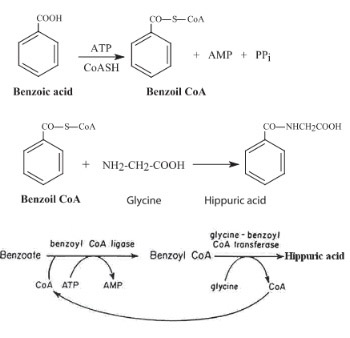Urinary Hippuric Acid after Ingestion of Edible Fruits
DOI:
https://doi.org/10.17305/bjbms.2008.2994Keywords:
hippuric acid, fruits, phenolic acid, biotransformationAbstract
Aim of this study was to evaluate the biotransformation of simple phenols after ingestion of edible fruits and mixed food. It was analyzed hippuric acid in urine as biomarker of conjugation in the liver cells of glycine with aromatic phenolic acids such benzoic and salicylic acid from ingested food. Measurement of hippuric acid in urine samples of 10 healthy individuals: 5 female and 5 male with a mean age 51,5 years were recruited to participate in this study. Urine samples were collected for 24 hours. The additional meals 300 g of fruits: blueberry, cherry, raspberry, melon, blackberry and mixed food were given immediately before the 24 hr urine sampling. Otherwise, the meals given during 24 hr was a usually food. Biotransformation of phenols in edible fruits, that are together with liver glycins precursors of hippuric acid biosynthesis, was evaluated by direct spectrophotometric measurement of excreted hippuric acid in urine at 410 nm. It was established that the highest quantity of hippuric acid was after ingestion of 300g of bilberry fruits (p< 0,003), and same quantity of cherries (p< 0,003). Concentration of excreted hippuric acid was twice higher after ingestion of these fruits in comparison with hippuric acid concentrations in urine after ingestion of common - mixed food. Quantity of biosynthesised hippuric acid was in direct correlation with the concentrations of its precursors, primarily phenol acids and other simple aromatic acids ingested with food.
Citations
Downloads

Downloads
Published
How to Cite
Accepted 2018-01-15
Published 2008-02-20









